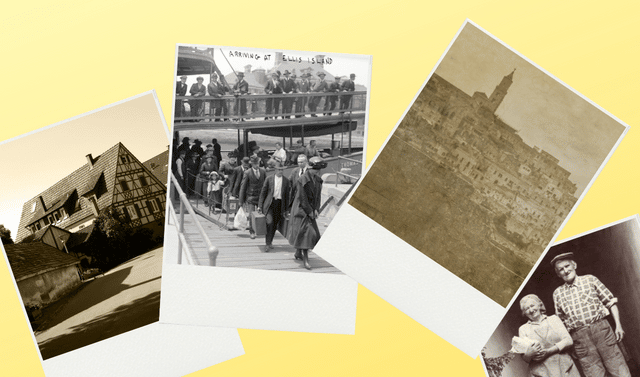Sign up for the Family Tree Newsletter! Plus, you’ll receive our 10 Essential Genealogy Research Forms PDF as a special thank you.
Get Your Free Genealogy Forms
"*" indicates required fields
As you research your family back in time from yourself, you’ll find clues that point you a variety of records. But some kinds of records are easier to use and/or cover a broader segment of the population than others.

Image via
Check these 10 go-to genealogy records for any ancestor who falls into the right age range at the right time.
Home sources
Search for awards, certificates, Bibles, photos and other family papers in closets and attics in your own or relatives’ homes. This is among your first steps when starting your family tree.
Check every available US census during each ancestor’s lifetime. The census has been taken every 10 years since 1790; 1930 is the most recent one open for research. (Almost all of the 1890 census was destroyed.)
Censuses are on microfilm at National Archives and Records Administration (NARA) facilities, the Family History Library (FHL) and many of its branch Family History Centers, and large libraries. The census is online at subscription site Ancestry.com and at Ancestry Library Edition and HeritageQuest Online (free through many libraries).
Individual censuses are at subscription site Footnote (1860 and 1930) and are being added free to FamilySearch (1850, 1860, 1870, 1880 index, 1900, 1920 index).
Birth records
Most states mandated tracking births starting in the late 1800s and early 1900s; towns and counties may have kept records earlier. States often restrict access to birth records older than 75 or 100 years. Historical birth records may be at the state archives or health department, county courthouse or elsewhere. See the state vital records office Web site for information on obtaining them.
Marriage records
These work similarly to birth records as far as when they were kept, and where they’re stored (they’re also listed on our Vital Records chart). Look for marriage licenses, too, as well as church records and newspaper announcements.
Death records
These include not only death certificates—kept by the same entities as birth certificates, often with fewer privacy restrictions—but also obituaries and the free Social Security Death Index (which lists deaths reported to the Social Security Administration, mostly after 1962). Once you know the date and place of death, look for a will and probate records.
Ship passenger lists
Starting in 1820, US-bound ships had to keep lists of their passengers. Some 40 percent of Americans have an ancestor who arrived at Ellis Island from 1892 to 1924 (Ellis Island records are free online), but immigrants also arrived at other ports.
Surviving lists for all ports are on microfilm at NARA facilities and the FHL, and online at Ancestry.com. Large public libraries often have microfilmed records from various ports, too.
WWI draft cards
Virtually every man born from 1872 to 1900 and living in the United States in 1917 and 1918 had to fill out a WWI draft registration card. They’re on NARA and FHL microfilm, and on Ancestry.com.
City directories
Like modern phone books, these annual directories listed the residents of city or town, and some rural areas.
Once you find your ancestors lived in a certain place at a certain time, look for them in city directories to get an address and determine when they may have moved. Use the Online City, County, and Rural Directories Web Site for links to online directories.
SS-5: If you find your ancestor’s Social Security Number in the Social Security Death Index, be sure to send away for his application, or SS-5. Find out how to request an SS-5 on the Social Security Administration website.
For advice on how to get past the occasional roadblock in your records research, see our webinar Brick Wall Strategies: Advice and Ideas for Getting Past Research Dead Ends, available on Family Tree Shop.
ADVERTISEMENT




